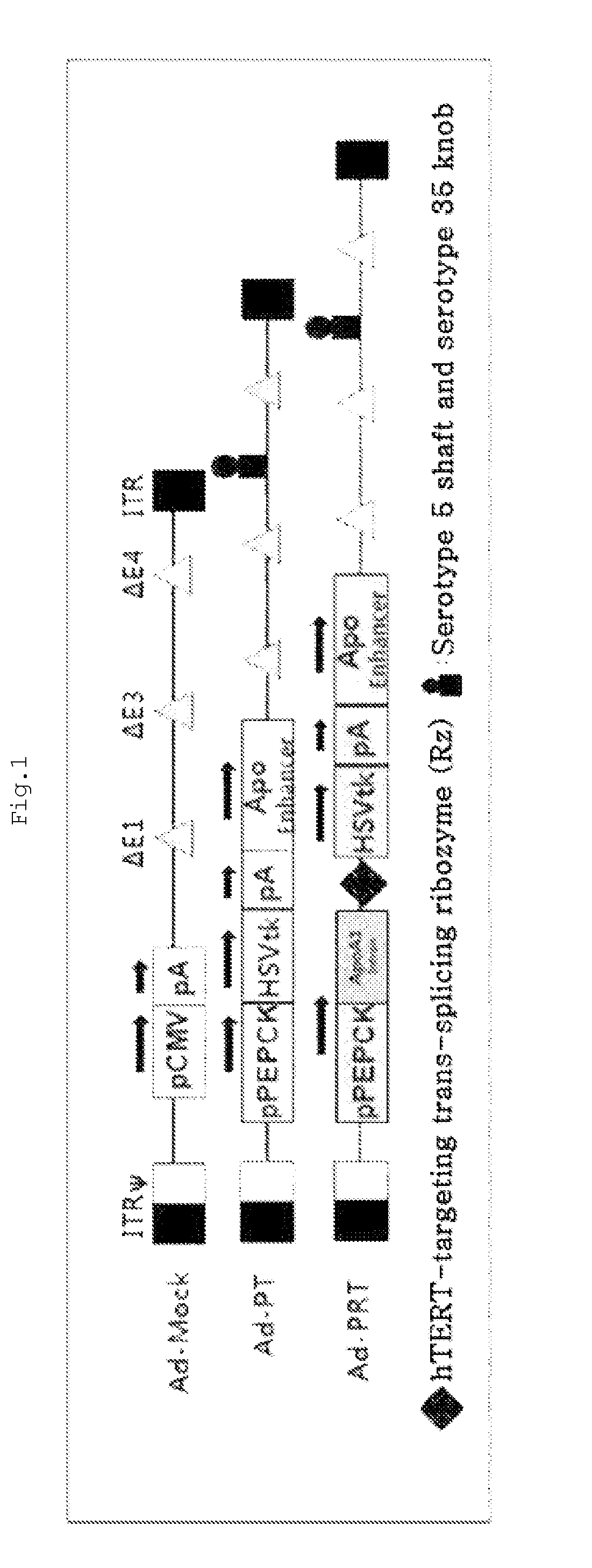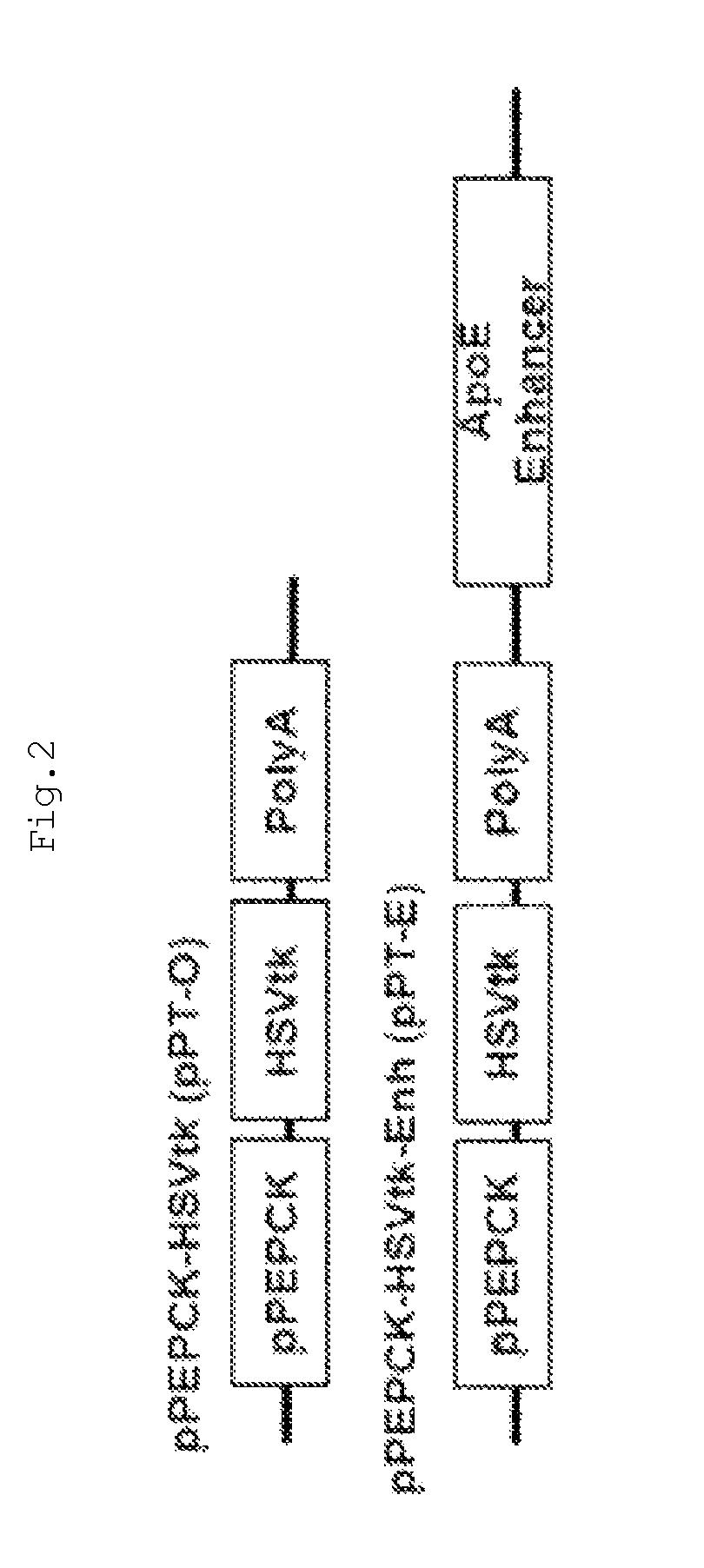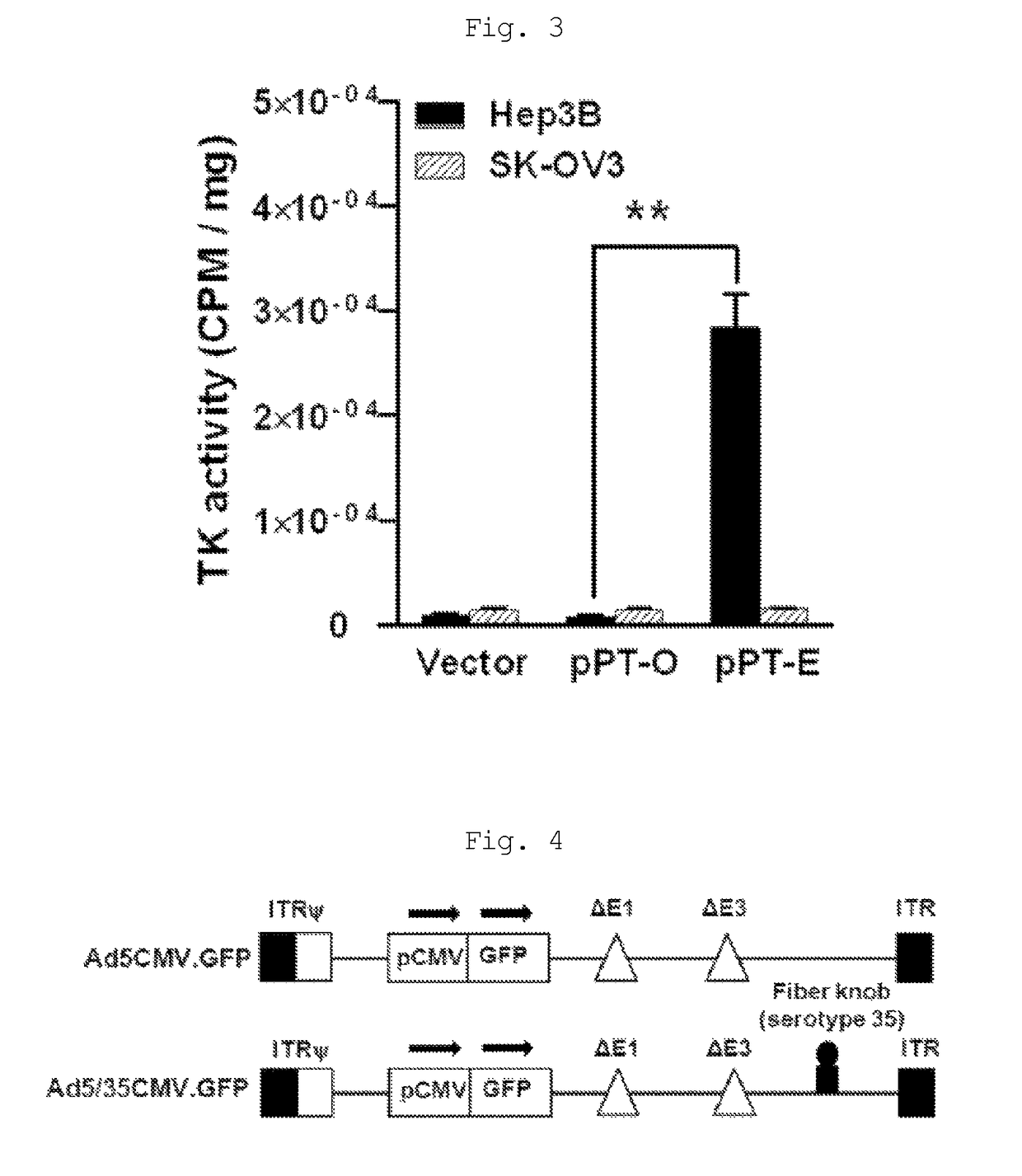Recombinant adenovirus with increased safety and anticancer activities, and use thereof
a technology of adenovirus and adenovirus, which is applied in the field of recombinant adenovirus, can solve the problems of limited local therapy, difficult treatment of liver cancer, and difficult application of therapies, and achieve the effects of increasing in vivo safety, tissue specificity and anticancer activity
- Summary
- Abstract
- Description
- Claims
- Application Information
AI Technical Summary
Benefits of technology
Problems solved by technology
Method used
Image
Examples
example 1
ion of Recombinant Adenovirus
[0093]To construct the recombinant adenovirus of the present invention, a ribozyme was constructed according to the method described in the literature (Kwon et al., Mol. Ther. 12: 824-834, 2005). Also, the PEPCK gene promoter was constructed according to the method described in the literature (Kwon, B. S. et al, FEBS Lett 580, 5033-5043, 2006). In addition, a pcDNA 3.1 (Invitrogen) vector (pPEPCK.Rz.HSVtk) including PEPCK.Rz.HSVtk composed of the PEPCK promoter, an ApoA1 (Apolipoprotein A1) intron, the ribozyme and the HSVtk gene was constructed according to the method described in the literature (Song M S, et. al. Cancer Gene Ther2009; 16:113-125.). Next, PEPCK.HSVtk was cleaved from the pcDNA 3.1 (Invitrogen) vector including PEPCK.Rz.HSVtk by SalI and SmaI restriction enzymes, and was ligated with a pZAP1.1ΔNotI / BglII vector (OD260, Boise, Id.) previously cleaved by SalI and EcoRV restriction enzymes, thereby constructing pZAP1.1 (PEPCK.TK). In additi...
example 2
ure
[0096]The human cancer cell lines and human mammary epithelial cell line (HMEC) used in the present invention were all purchased from ATCC (American Type Culture Collection).
[0097]Hep3B cells and HMECs were cultured in RPMI1640 media containing 10% fetal bovine serum (FBS) (Invitrogen, USA) and 1% penicillin / streptomycin (P / S) (Invitrogen, USA). The cell lines were all used in the following experiments after they were cultured in an incubator under the conditions of 37° C. and 5% carbon dioxide.
[0098]Experimental Example 1: Analysis of Effect of Therapeutic Gene in the Presence or Absence of Enhancer
[0099]In order to analyze the PEPCK-induced activity of PEPCK in the presence or absence of an ApoE enhancer, a pPEPCK-HSVtk (pPT-O) recombinant adenovirus comprising the tissue-specific promoter PEPCK and HSVtk, and a pPEPCK-HSVtk-Enh (pPT-E) recombinant adenovirus comprising PEPCK, HSVtk and an ApoE enhancer, were constructed in the same manner as described in Example 1 (FIG. 2). Th...
PUM
| Property | Measurement | Unit |
|---|---|---|
| volume | aaaaa | aaaaa |
| volume | aaaaa | aaaaa |
| volume | aaaaa | aaaaa |
Abstract
Description
Claims
Application Information
 Login to View More
Login to View More - R&D
- Intellectual Property
- Life Sciences
- Materials
- Tech Scout
- Unparalleled Data Quality
- Higher Quality Content
- 60% Fewer Hallucinations
Browse by: Latest US Patents, China's latest patents, Technical Efficacy Thesaurus, Application Domain, Technology Topic, Popular Technical Reports.
© 2025 PatSnap. All rights reserved.Legal|Privacy policy|Modern Slavery Act Transparency Statement|Sitemap|About US| Contact US: help@patsnap.com



